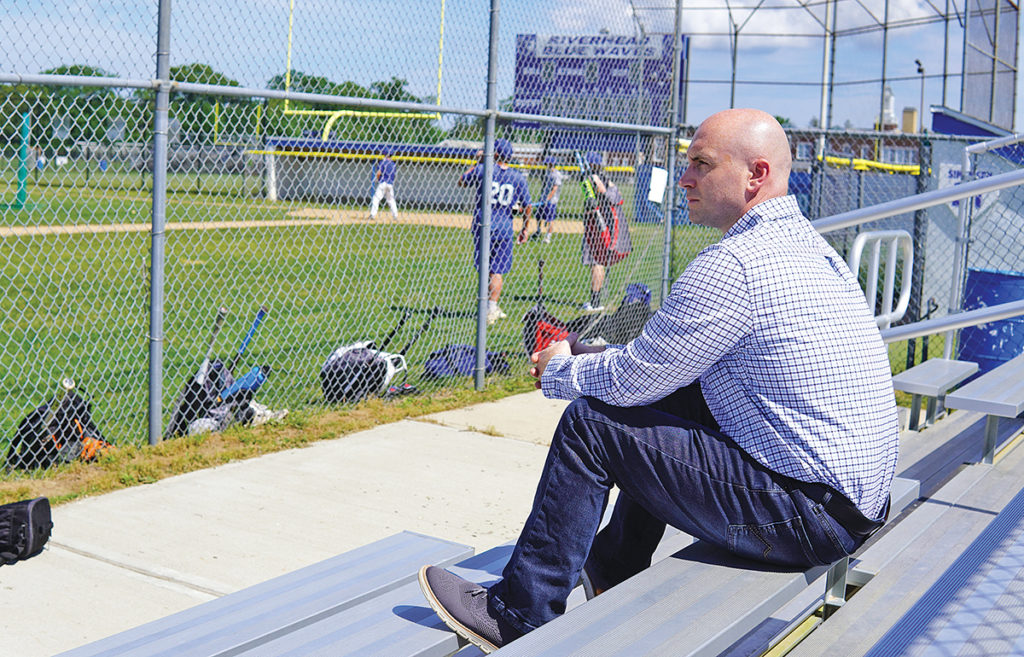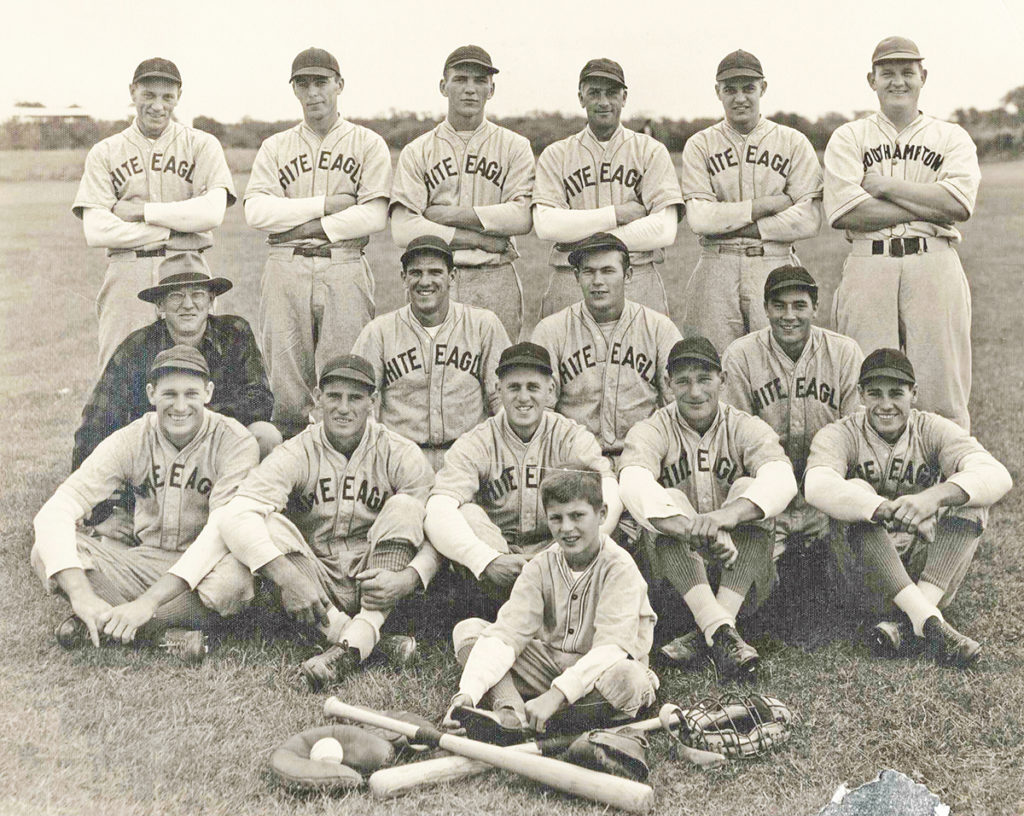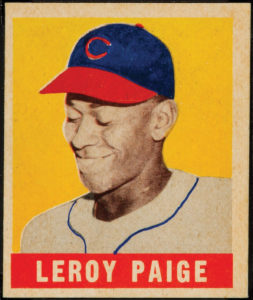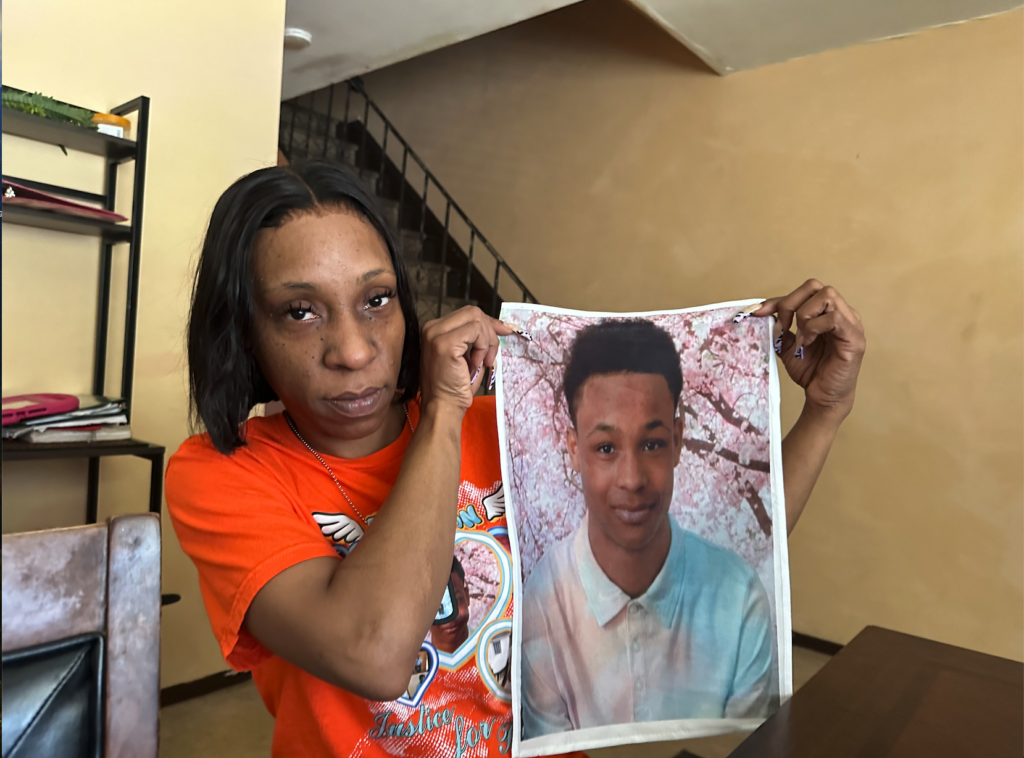The night Satchel played in Riverhead; baseball history unearthed here

Riverhead was abuzz. Cars and throngs of people made their way toward Riverhead Stadium while police directed traffic and the overflow crowd on the evening of July 21, 1950. The anticipation and excitement that summer evening must have been virtually palpable. They had all come for a big show, to watch a baseball legend.
It was the night Satchel Paige pitched in Riverhead.
Nearly 71 years later, Constantine Ricci’s memories of that night — and Paige — remain vivid.
“I remember every pitch. You know why? Because it was only three pitches.”
Constantine Ricci
Paige pitched for the Philadelphia Stars in a barnstorming game against the semipro Riverhead Falcons. Not only was Ricci there, but he said he played third base for the Falcons for every inning for three years, including that magical night against Paige.
Does Ricci remember how he fared in his single at-bat against Paige?
“I remember every pitch. You know why? Because it was only three pitches,” he said, laughing.
Ricci, 93, speaking in a phone interview from his Dallas residence, had made an all-metropolitan team three years in a row while playing for Hofstra College. At the time of that memorable game he was 22, a good contact hitter with a knack for hitting breaking balls.
When it came time for Ricci’s turn at the plate, he said he surprisingly wasn’t nervous. The first pitch was a shoulder-high fastball that Ricci fouled off. “The second pitch was the exact same pitch and I did the exact same thing,” he said. “I want to add, on my behalf, now they would be [called] balls because they were shoulder high. And the third pitch, I’m now 93 years old and I still don’t know what he threw me because I never saw that pitch before. It looked like a fastball on the outside corner. This is what I thought was going to happen. Then, all of a sudden, the ball like jumped into the strike zone and I took a third strike. I still don’t know what he threw.”
Ricci then took his seat on the bench and watched as Paige mowed down other batters. The Stars went on to a 10-5 win before a reported record stadium crowd of 6,155.
What brought added intrigue to this game, well after the fact, is that Carl Yastrzemski Jr., like Paige a future National Baseball Hall of Famer, was a 10-year-old batboy at the time for the Falcons and his father played for the Falcons in that game.
Yastrzemski Jr., who was a standout athlete at Bridgehampton High School, played 3,308 games over a 23-year MLB career with the Boston Red Sox. He totaled 452 home runs and 1,844 RBIs. His grandson, Mike, is a San Francisco Giants outfielder.
Ricci, who doesn’t know if he’s the only surviving Falcons player, said memories of facing Paige were triggered last month when he read a story about the Stars-Falcons game by Newsday’s John Valenti.
“It really knocked me for a loop when I saw” the Newsday story, he said. “I was amazed. This was like 70 years ago! … It brought back many, many memories that I haven’t thought about.”
Fabio Montella, an assistant professor of library services and history for Suffolk County Community College’s Eastern Campus in Riverhead, came across this intriguing bit of baseball history while doing research. He wrote a research paper titled, “Satchel & The Yastrzemskis: A Long Island Narrative.”

Montella has been in touch with Suffolk Sports Hall of Fame executive director Chris Vaccaro about the matter. When Vaccaro learned that Paige had played in Riverhead, he was taken aback.
“He’s one of the biggest names in the history of the game pitching right in our county,” Vaccaro said. “And the tie-in with the Yastrzemski family makes it just perfect because there’s no bigger name on the East End or arguably in Long Island history than Carl Yastrzemski, and the fact that young Carl was a batboy and big Carl is playing in the game makes this one of the most unique moments in time in Suffolk County history.”
Vaccaro said the SSHOF would like to place a historic marker on the site where Riverhead Stadium was located, similar to a historic marker it placed at the Long Island Ducks’ stadium in Central Islip in 2019. Riverhead Raceway is among other sites he is interested in for historic markers. “It’s been my vision to honor locations of sporting history just as much as we honor people who are significant in sports,” he said.
Montella said Riverhead Stadium was built by Anthony Wivchar in 1949 and he believes it closed in 1951 or 1952 because it wasn’t producing enough revenue to make it viable.
Riverhead Town historian Georgette Case said she had seen an aerial photo that clearly showed the stadium was located where Riverhead High School now sits on Harrison Avenue.
Vaccaro said he needs formal approval from the school district to erect such a historical marker on the site, and said he has exchanged emails with the school district clerk regarding the matter. He said if that approval is granted, it would take a few months for the marker to be made and delivered.
In the three scoreless innings he pitched that night in 1950, Paige recorded five strikeouts and no walks. The only hit he allowed was a triple to Jerry McCarthy, and that came off an eephus pitch, a playfully lobbed slow toss, said Ricci.
Bob Burns, covering the game for the Riverhead News-Review, reported that Paige “seeming to thoroughly enjoy himself, was far too fast and tricky for the locals in his stint …” Burns wrote, “All in all, he gave a masterful performance without seeming to work too hard.”
The Falcons were an interesting group. They had a New York Knicks basketball player, Carl Braun, pitch for them, and McCarthy, who had three big-league at-bats for the St. Louis Browns in 1948 and dated actress Grace Kelly, said Ricci. (Braun’s family had a summer house in Mattituck, according to Ricci).
Yastrzemski Jr. saw Paige strike out his father. Bringing things to full circle, it was the younger Yastrzemski who had the last hit off Paige in Paige’s final major league game Sept. 25, 1965, when he played in a game for the Kansas City Athletics.
Many years later, Yastrzemski Jr. recalled Paige fanning his father in Riverhead. “He had the same nice, easy motion against my dad that he had when he pitched against me,” he told the Kansas City Star in a 2015 interview. “Very easy, deliberate, then boom.”

The County Review, which was a Riverhead-based newspaper, wrote in an advance story before the Stars-Falcons game that baseball experts “are agreed that in his prime Paige ranked right alongside such all time pitching greats as Walter Johnson, Christy Mathewson, Dizzy Dean and Bob Feller at their best.” The paper said Paige’s control at the time was “still uncanny and his fast ball and curve ranks with the best.”
The 1965 game was a one-game comeback for Paige, and seen as a publicity stunt by Athletics owner Charlie Finley, whose team was struggling in the standings and in attendance.
Paige was believed to be at least 59 years old at the time of that last game, but did anyone really know how old he was? Paige himself may not have known his actual age, one of the many mysteries surrounding the man with the rubber arm.
A quote attributed to Paige addressed the age issue: “Age is a question of mind over matter. If you don’t mind, it doesn’t matter.”
A master showman, Paige played along with the gimmick surrounding his game with the Athletics at his age (whatever it was). The Associated Press snapped a photo of Paige being tended to by a nurse while he sat in a rocking chair near the dugout.
A visual aid to the Paige legend.
“The thing about Satchel, he was up there in age, but a lot of historians truly believe that his age wasn’t accurate,” Montella said. “Nobody really [knew] his exact age. Some say that when he pitched his final game in the major leagues at 59, he might have even been 69, which is unheard of, throwing 80 to 90 miles an hour.”
He continued: “Satchel was that unique, almost freakish combination of power and precision, and I think his precision was more of a threat to hitters … He would hit a cigarette in a teammate’s mouth from 60 feet away, knock it out. And it just shows you two things: It shows you, one, how accurate he was; and two, his teammates had that much trust in his precision that they were willing to stand there with a cigarette in their mouth while someone is throwing a ball across your face.”

Paige’s baseball career was remarkable, by any definition. It spanned five decades, beginning in the Negro Leagues in the 1920s. He made his MLB debut with the Cleveland Indians on July 7, 1948. Later that year, he became the first Black player to pitch in a World Series (which the Indians won). That was one year after Jackie Robinson broke the MLB color barrier, playing with the Brooklyn Dodgers.
Paige played for the Indians in 1949, too, before returning to the majors in 1951 for three seasons (twice as an all-star) with the St. Louis Browns before making that one-game appearance with the Athletics in 1965.
His MLB stats, according to baseball-reference.com: a 28-31 record and 3.29 ERA over 179 games and 476 innings pitched over six seasons. Those figures don’t even come close to telling the full tale, though.
What about his Negro League numbers? Good question.
Negro League statistics and record keeping was lacking. Paige insisted he kept his own records and reported pitching in more than 2,500 games and winning 2,000 or so as well as playing for 250 teams and throwing 250 shutouts, according to biography.com.
Paige did a good deal of traveling, playing in barnstorming games throughout the country and in other countries as well.
In 1971, Paige became the first Negro Leagues player to be inducted into the Hall of Fame. Yastrzemski Jr. made it to Cooperstown in 1986.
“You have one of the greatest pitchers, not just of the Negro Leagues, but of all time, coming to Long Island and everybody knew of him,” Montella said. “Satchel was a celebrity. He wasn’t by any stretch of the imagination unknown. He was probably more familiar than most major league players.”
Case said she has been aware of the stadium, but didn’t know Paige had played there. “That is history, history uncovered,” she said, adding, “If we don’t keep history alive, we lose a lot of this information.”
Case was aware, however, that Babe Ruth had played in Riverhead in November of 1923. Ruth played in a barnstorming game against a team of Suffolk County all-stars on the “Fair Grounds” in Riverhead, but the event was deemed a financial failure, according to the Brooklyn Daily Eagle.
Some businesses closed shop for the occasion and high school students were allowed to leave school early to see the Great Bambino play. Despite that, the Brooklyn Daily Eagle wrote “there were hardly more [than] 1,000 persons dancing about in heavy ‘blankets’ trying to keep warm enough to see the exhibition through to its finish.
“Eastern Long Island found the Babe to be all that the press stories have said he was. He gave a good exhibition of long hitting prior to the game. In the game itself he got only one homer, that in the first inning, bringing in one run ahead of him. While here he autographed a peck or so of baseballs …
“The game itself was about as complete a burlesque as has ever been played in the county.”
Montella wants to write a book about Long Island’s baseball history. “A lot of stuff I sort of discovered myself for the first time, and as I’m discovering it, I’m saying, ‘How did we not know about this?’ ” he said. “I’m looking forward to discovering more because I know there’s a lot of history out there.”
Despite that early strikeout against Paige, Ricci still went 2-for-4 in the game against the Stars, those hits coming after Paige had left the game. Ricci still has a lasting image of Paige’s delivery.
“He was about 6-3 or 6-4 and very, very thin,” Ricci said. “When I faced him, all I saw was elbows and knees, and he had the smoothest delivery. He looked like he had no effort at all, but that ball came in, you know, in those days, 90-plus miles [an hour]. He still had the speed.”
Paige died on June 8, 1982.
“When somebody asks me, what did I do in baseball, I don’t give them any pluses, I give them a negative,” Ricci said. “I faced Satchel Paige and I struck out. That was my fame to baseball.”








